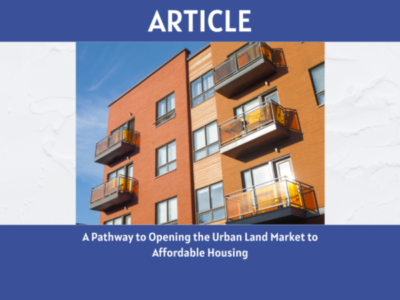Philadelphia’s property tax abatement program was envisioned as a come-on to get urban pioneers to invest in fringe neighborhoods. But 17 years later the abatement is costing cash-poor Philadelphia dearly, and is creating have and have-not neighborhoods. Is it time to re-evaluate this strategy? Read more…
How to prevent Philly’s property-tax abatement from becoming a subsidy for the rich
by Inga Saffron
The Philadelphia Inquirer
Updated: October 26, 2017 — 6:02 AM EDT
Excerpts:
The Philadelphia officials who crafted the 10-year property tax abatement in 2000 could hardly have imagined a building such as 500 Walnut. Developed by Tom Scannapieco, who has spent his career building luxury condos, this 50-foot-wide sliver tower was designed to top anything that exists in Philadelphia.
But of all the perks offered by 500 Walnut, the most coveted is the city’s tax abatement. Based on calculations provided by the city’s Office of Property Assessment, the building’s 36 owners will collectively save — and the Philadelphia treasury will forgo — a total of $2.2 million in taxes annually for the next decade.
The program succeeded beyond anyone’s wildest dreams, setting off a revival that has transformed Philadelphia across its midsection, from the Temple University area south to the sports complex. Over the years, the abatement has assumed almost magical powers in the minds of policymakers. But now the staggering size of the tax break raises a larger policy question: Is it time to update the abatement?
Philadelphia remains a cash-poor city that can barely provide the basics for its schoolchildren. Since the School District receives 55 percent of all property tax revenue, it takes the biggest hit from the abatement. The abatement increasingly is [also] costing Philadelphia its history. Because of the way it skews the economics of construction, the subsidy encourages developers to demolish rather than renovate, dispensing with less-efficient, but often charming, older buildings. “Historic preservation used to be about stemming demolition by neglect. Now it’s all about demolition by intent,” Paul Steinke, the head of the Preservation Alliance, observed at a recent hearing.
Meanwhile, the abatement is creating have and have-not neighborhoods and intensifying inequality: It has spurred gentrification in the ring of neighborhoods surrounding Center City, while doing little for the struggling neighborhoods beyond that core. Should the city really be subsidizing construction in its wealthiest, most successful neighborhoods?
Despite the inequities, Philadelphia probably needs to maintain some form of tax abatement. Still, few cities offer the kind of one-size-fits-all style abatement that Philadelphia does. “A blanket abatement is a really bad idea,” argues George W. McCarthy, head of the Lincoln Institute of Land Policy in Cambridge, Mass.
Comment:
How about introducing a different form of “abatement” to spur building investments without putting a dent in the city’s treasury? A revenue-neutral land value tax would shift the property tax burden off building assessments onto land values. Owners of vacant sites would see the financial incentive to invest in capital improvements. No subsidy needed!




